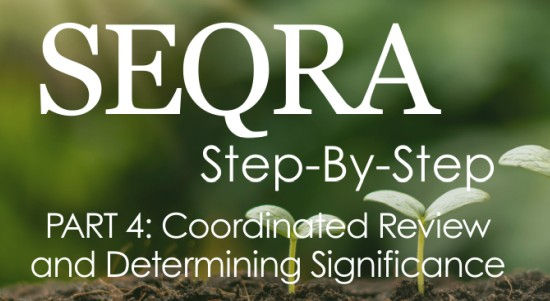NYS DEC Issues Proposed Regulations to Implement Climate Leadership and Community Protection Act
- Underberg & Kessler

- Aug 25, 2020
- 3 min read
Updated: Aug 28, 2020
This article was published in The Daily Record on August 24, 2020 - Download the Reprint
On July 18, 2019, Governor Cuomo, signed the Climate Leadership and Community Protection Act (CLCPA). The legislation was described in the Governor’s press release at the time of adoption as “the most ambitious and comprehensive climate and clean energy legislation in the country.” NYS Department of Environmental Conservation (DEC) is issuing proposed regulations this week under the CLCPA.
The overall requirements are dramatic and are intended to re-shape New York’s energy, transportation and building sectors in the next few decades. First, CLCPA requires the State to attain a carbon free electricity system by 2040 and reduce greenhouse gas emissions by 85% below 1990 levels by 2050. The Governor has touted the program as “setting a new standard for states and the nation to expedite the transition to a clean energy economy.” The legislation is said to spur investment in clean energy technologies such as wind, solar, energy efficiency and storage, with targeted investment in disadvantaged communities and thousands of new jobs. The Governor has asserted that CLCPA will improve public health, quality of life and provide the State with more clean energy choices.
The CLCPA requires the NYS Department of Environmental Conservation (DEC) to adopt regulations to attain an initial 40% reduction in emissions from 1990 levels by 2030 and an 85% reduction in greenhouse gas emissions by 2050. DEC issued draft regulations in the State Register on August 19, establishing a new 6 NYCRR Part 496 captioned Statewide Greenhouse Gas Emission Limits. The regulations will cover the entire breath of the NYS emission sources from energy, transportation, buildings and development. Significantly, internal combustion engines (gas or diesel), as well as boilers and furnaces are included under the scope of greenhouse gas emissions sources.
The proposed regulations set the 1990 baseline, per the CLCPA, which includes all NYS sources of greenhouse gas emissions, along with emissions from imported electricity and fossil fuels. The draft regulations establish statewide emission limits on natural and man-made gases, including carbon dioxide, methane, nitrous oxide, hydrofluorocarbons, perfluorcarbons, and sulfur hexafluoride. The regulations set the estimated statewide greenhouse gas emission limit in 1990 at 401.38 million metric tons of carbon dioxide equivalent based on reference to Global Warming Potential of greenhouse gases as provided by the Intergovernmental Panel on Climate Change. The regulations further provide that the 2030 level of 60 percent of the 1990 level shall be 240.83 million metric tons and the 2050 level of 15 percent of the 1990 level be 60.21 milllion metric tons. The DEC will accept written public comments on the draft regulations through October 27, 2020.
The CLCPA and regulations enact the Governor’s “nation-leading goals as called for under his Green New Deal,” requiring that at least 70% of New York’s electricity from renewable energy sources such as wind and solar by 2030 in order to attain 100% carbon neutral by 2040. Hence, the CLCPA requires NYS to be 100% zero emission electricity by 2040. In addition, the Governor’s goals of “nation-leading commitments” to install 9,000 megawatts of offshore wind by 2035, 6000 megawatts of solar by 2025, and 3,000 megawatts of energy storage by 2030.
The proposed CLCPA regulations come about two months after NYS Department of Public Service (DPS) and NYS Energy Research and Development Authority (NYSERDA) issued a white paper on an expanded Clean Energy Standard (CES) that is aimed at accelerating renewable energy, combating climate change, decarbonization of the electric generation system and creation of clean energy jobs. The joint press release noted that the proposed CES aims to re-focus “New York’s existing and relevant regulatory and procurement structures on meeting the critical goal of meeting 70 percent renewable electricity by 2030 and setting the State on the rapid and irreversible path to achieve a carbon free power sector by 2040 in order to align with the goals laid out in New York’s nation-leading [CLCPA].” The new CES will attempt to implement the CLCPA requirements while identifying targets for large scale renewable energy procurement.
The proposed CLCPA regulations are another step in implementing the CLCPA in an effort to re-shape the State’s energy and economic structure to meet the greenhouse gas emission standards and performance standards.While the Governor and environmental groups have supported the passage of the legislation and will likely do the same with the proposed regulations and Clean Energy Standard, the costs and impacts to New York businesses and residents have not been a part of the discussion.As a result, it is unclear whether environmental regulatory technology, public support and economic impacts will sustain the extremely aggressive goals mandated by CLCPA. Particularly as the State seeks to dig out of the economic impacts created by the COVID-19 pandemic which has had a profound effect on businesses of all size, State, local and county revenues and deficits.
If you have any questions, please contact George S. Van Nest here or at 716-847-9105.







Comments